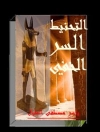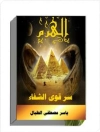Status and gender are two closely associated concepts within medieval society, which tended to view both notions as binary: elite or low status, married or single, holy or cursed, male or female, or as complementary and cohesive as multiple parts of a societal whole. With contributions on topics ranging from medieval leprosy to boyhood behaviors, this interdisciplinary collection highlights the various ways “status” can be interpreted relative to gender, and what these two interlocked concepts can reveal about the construction of gendered identities in the Middle Ages.
表中的内容
Introduction: Gender and Status in the Medieval World
Katherine Weikert and Elena Woodacre
Chapter 1. Mirrors for Margraves: Peter Damian’s Models for Male and Female Rulers
Alison Creber
Chapter 2. Inaudito Exemplo: The Abduction of Romsey’s Abbess
Linda D. Brown
Chapter 3. The Corpus Christi Devotion: Gender, Liturgy, and Authority among Dominican Nuns in Castile in the Middle Ages
Mercedes Pérez Vidal
Chapter 4. From Villainous Letch and Sinful Outcast, to “Especially Beloved of God”: Complicating the Medieval Leper through Gender and Social Status
Christina Welch and Rohan Brown
Chapter 5. “To Take a Wyf”: Marriage, Status, and Moral Conduct in “The Merchant’s Tale”
Natalie Hanna
Chapter 6. Objectification, Empowerment, and the Male Gaze in the Lanval Corpus
Elizabeth S. Leet
Chapter 7. Pueri Sunt Pueri: Machismo, Chivalry, and the Aggressive Pastimes of the Medieval Male Youth
Sean Mc Glynn
Chapter 8. “And Much More I am Soryat for My Good Knyghts”: Fainting, Homosociality, and Elite Male Culture in Middle English Romance
Rachel E. Moss
Chapter 9. Wrist Clasps and Patriliny: A Hypothesis
Frank Battaglia
关于作者
Elena Woodacre is Senior Lecturer in Early Modern European History at the University of Winchester.












